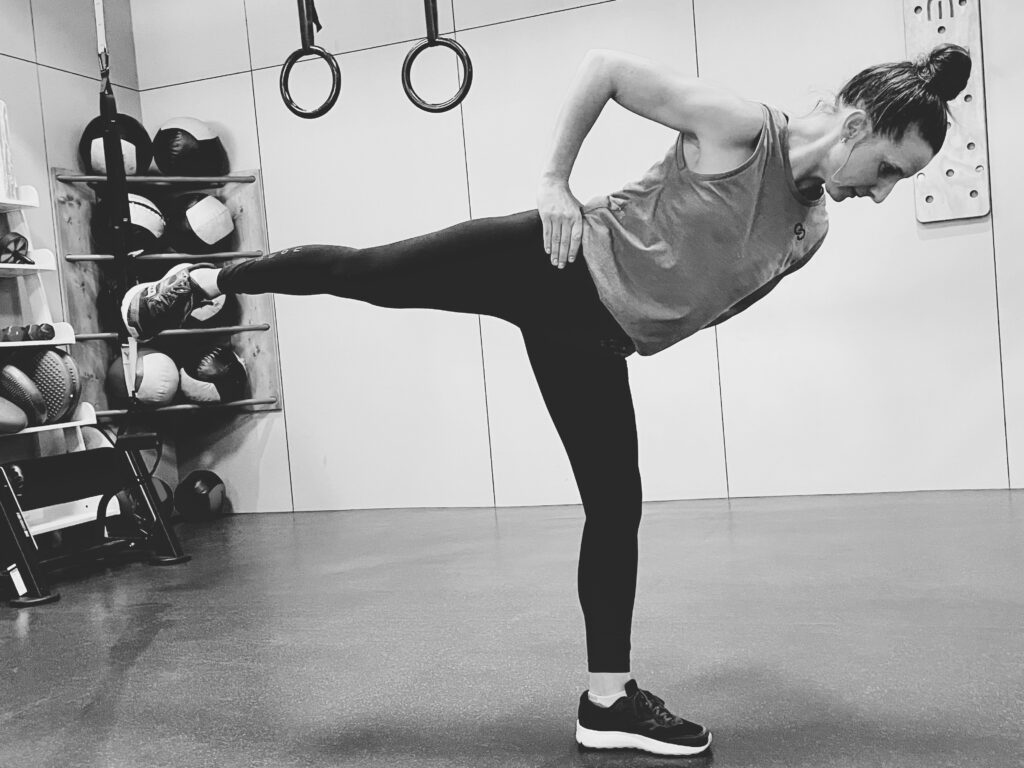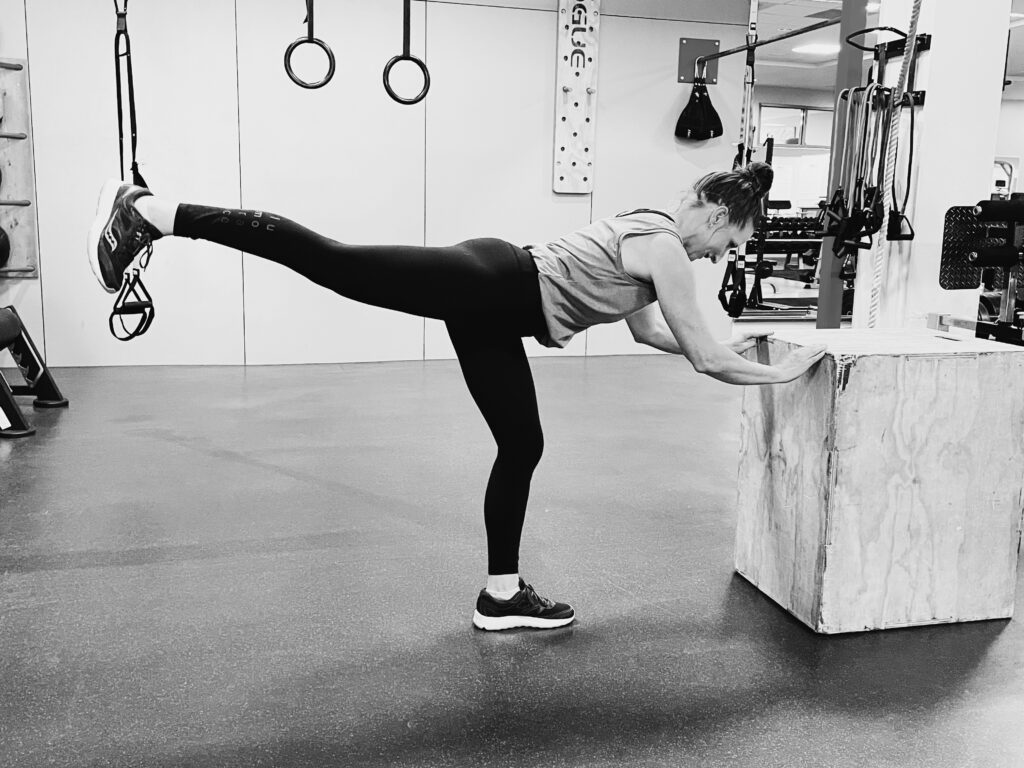If you’re trying to get the most out of your leg program, you might want to try an exercise called Hip Airplane. I know a lot of us use squats and lunges to stay strong for strength in the sports we enjoy. With ski season right around the corner, you’ll need good hip function. Good hip function keeps you symmetrical on skis, or in a squat, minimizes any hip shifting, and helps mobility. The Airplane is an exercise that targets the posterior hip muscles, the Gluteus Medius and Maximus. Strengthening these muscles is important, as your glutes are key lateral stabilizing muscles of the hip and legs, including the hamstrings.
Along with teaching you good pelvic control, which can eliminate back pain, or excessive motion in your back (not good) the Airplane also targets six muscles in the deep gluteal region known as external rotators of the hip joint. Yes, squats and lunges are fundamental strengthening exercises. Your glutes have to work hard when you lift yourself out of the bottom of a squat. But squats are typically performed in a one plane of motion-up and down. Very few exercises work on the rotational aspect of a move. The Airplane does just that: it helps improve your mobility, especially if you are tighter on one side. For skiers who feel like they are tighter turning one way than the other, this can be a helpful pre-season exercise.
Airplane is also a terrific neuromotor exercise. Performing it throughout the season can improve your motor skills, such as balance, coordination, agility, gait and proprioception. The advantage of practicing most single leg exercise is that any neuromotor exercise helps solidify a connection between the nervous and muscular systems.
Hip Airplane:

1. Place your hands on your hips. Ground one foot into the floor, hinge from your hips, and lift the opposite leg back.

2. Open the hip about 2 inches, or as far as you can, squeezing the glute. Hold 5 seconds.

Tip- Steer the hip inward around the pelvis.
3. Drop the hip inward: you’ll feel a good stretch. Hold 5 seconds.4. Return to start.

5. To make it easier : Hold onto a bar or wall for support. You can also use your arms for balance.
